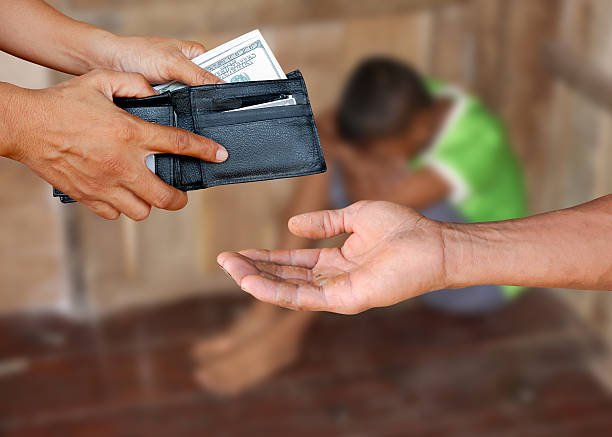Following the publication last month of our first ‘quarterly’ online safeguarding news update, we began trawling the web for the next quarters news stories. We found very quickly that in April alone there was an abundance of online safeguarding articles and news. We have therefore decided to publish this news update monthly. Here is the roundup for April.
2nd April – Social media playing a part in youth violence. Following the recent violence in London media attention turned to how gangs are using online platforms to fuel disputes and arrange gang related violence. The Guardian ran a story featuring a criminologist who called for the Government to modernise its approach and consider funding programmes, that educate youth workers in how to recognise and deal with the social media element involved in youth violence. This story followed recent comments by Metropolitan Police Commissioner, Cressida Dick, who highlighted social media as playing a key part in youth related violence.
3rd April – Snapchat adds 16 people group video calls – Snapchat launched a feature that enables up to 16 people to take part in a live video or audible group chat. They also added a tagging system whereby users can tag each other by username, using the @ symbol in their posts.
3rd April – Half a million offenders in the UK downloading images of child abuse. ITV News ran a story about a paedophile who was convinced that following voluntary therapy he would not re-offend. The person in question had previously been convicted of possessing indecent images of children, after he had been caught with 27,000 child abuse images on his computer. This prompted comments by Chief Constable Simon Bailey, National Police Chiefs’ Council lead for child protection, who said that the criminal justice system is struggling to cope with the number of sex offenders. Mr Bailey pointed out the need for rehabilitation programmes to reduce re-offending. The NSPCC said that there are half a million offenders in the UK viewing and downloading images of child abuse. The counter argument came from Jim Gamble, former head of the Child Exploitation and Online Protection Centre, who said “there is only one place that sex offenders belong and that is jail”.
3rd April – Rise in people seeking help to stop looking at child sex abuse images online. A similar story also ran in the media which claimed that more than 36,000 people in UK had sought assistance, to prevent either themselves or a family member from viewing images of child sexual abuse online. The charity ‘Stop it Now’ said that this number was a 40% increase compared to the 2016 figures.
3rd April – Shooting at YouTube’s HQ. 39-year old Nasim Aghdam opened fire at YouTube’s California HQ, injuring four people. Aghdam, who had several YouTube channels had previously criticised the media platform for filtering and suppressing her videos, which she claimed led to a loss of revenue. She also objected to YouTube adding an age-restriction to one of her videos. She described herself as a vegan bodybuilder, animal rights activist, model, artist and comedian. Aghdam also had a large following on Instagram with one of her accounts having 54,000 followers. There were reports that her father had warned police that she was likely to attend the HQ because she hated YouTube. Aghdam killed herself during the attack and YouTube removed all her channels. We have featured this story in our update, because it highlights the influence some Vloggers (Video Bloggers) can have on YouTube, even the most unstable of them.
5th April – Have you put your phone number on Facebook? Cyber security experts warned that fraudsters could abuse Facebooks phone number and email search facility to harvest people’s data from their profiles. In effect anybody who had not changed their privacy settings after adding their phone number could have been targeted. The ‘accusation’ was that the system at Facebook was making it easier for scammers to obtain confidential information. Facebook responded by saying that it had put in place measures to prevent this happening. However, this is a reminder that if you put your life ‘out there’ on social media, it may allow a scammer to use the information to commit fraud.
6th April – More warnings about Fortnite. A story featured in the media about a mother who had witnessed attempts to groom her 10-year old son through his Xbox as he sat on the sofa next to her playing the online game Fortnite. The mother heard an adult male addressing her son by name through her TV speakers, asking her son whether he knew what sex was. This story followed a warning by the National Crime Agency that Fortnite is putting children at risk from online paedophiles.
6th April –Gang violence fuelled by social media. There were more articles about social media’s part in gang related violence. One article described how YouTube, Snapchat and other platforms are used by gangs to celebrate and brag about shootings and stabbings, shame police witnesses, escalate feuds and feature acts of violence. One news piece raised a very valid point – “before social media, the news of any attack would also have time to spread, allowing for a cooling-off period. But the immediacy of today’s communications can be deadly”. Sharing on social media takes seconds. Most media platforms claim they have policies that adopt a zero-tolerance approach towards videos that feature and glamourise gang related violence. However, this does not prevent hundreds of videos being in circulation, and the media platforms making money by attaching legitimate advertising to them.
8th April – Victims of abuse should sue internet companies. It was reported that Chief Constable Shaun Sawyer, National Police Chiefs’ Council lead for modern slavery and human trafficking , said that the internet is now a “safe space for organised crime”. He suggested that victims of abuse should sue technology giants for being party to their abuses. He said that internet laws were too liberal, and heads of criminal networks were allowed to use them to commit crime with near impunity. He highlighted that media platforms were not currently doing enough to self-police the problem.
9th April – YouTube accused of violating child protection laws in the US. A coalition of 23 consumer, child safety and privacy advocacy groups filed a complaint against YouTube alleging that the media giant were collecting data from children aged under 13 and using their browsing habits to target them with advertising, all without parents’ knowledge or consent. Google (YouTube owners) responded robustly by pointing out that their policy is that children under 13 should not register for an account. This was a rubbish response, given that YouTube is used the world over by children, and much of the content is aimed at young people. Their under 13 rule is hardly enforceable.
9th April – What does the green padlock mean? Consumer magazine Which ran a feature following a complaint about an advert from Barclays, which told people to check for a green padlock before buying goods online. The television advert aired late last year and gave the viewer the impression that you could tell that a seller was genuine, if they had a green padlock. The Advertising Standards Authority (ASA) deemed the advert to be misleading, in that it implied websites with green padlocks were guaranteed to be safe. Whilst a green padlock normally means the website is secure, it is not guaranteed. The ASA advised that this should not solely be relied upon, and others checks should be made to ensure that the seller is genuine. Barclays apologised.
10th April – YouTube’s video for hit song Despacito hacked. Despacito, the hit song with 5 billion views was hacked and replaced with a photo showing a group of people wearing masks and brandishing guns. YouTube took the video offline whilst they fixed the issue. However, it wasn’t the only video to come under attack. These were posted by the music hosting service Vevo and included videos by Taylor Swift and Shakira. The hackers replaced some if the video titles with political messages.
11th April – Focus on the Dark Web. The then Home Secretary Amber Rudd said that criminals had become emboldened by the anonymity of the dark web. Giving a speech at the CyberUk conference she criticised it for being home to “sites that live-stream child abuse to order, space for terrorists to plot and share their murderous expertise and the option of ordering drugs to doorsteps”. She announced new funding to crack down on the Dark Web.
17th April – Social media fuelling violence. BBC Newsnight continued the focus on the violence in London by focussing on the violent imagery being shared online among young people in London. Amongst the images discovered by Newsnight were a young man being threatened with a gun to his head, images of stab wounds and youths brandishing knives.
18th April – Inappropriate advert featured on Wish.com. The US online retail giant Wish.com came under fire when it allowed an advert for a penis extender strap to feature within video games apps used by children. The Advertising Standards Authority (ASA) said that Wish.com had behaved “irresponsibly” and advised them that in future they must ensure any adverts were properly targeted at appropriate age groups. This wasn’t the first time Wish.com had failed to get it right, with previous adverts including the inappropriate showing of a baby’s backside and an advert featuring a bloody tattoo on a woman’s shoulder.
18th April – It’s not only YouTube tracking children. Following the story that YouTube were secretly tracking children’s browsing habits to target them with advertising, a research study revealed that thousands of apps in Google Play Store may also be violating children privacy laws by doing the same. This is not unsurprising given that Google owns YouTube. The researchers analysed nearly 6,000 apps for children and found that the majority of them may might well violate the Children’s Online Privacy Protection Act (COPPA) (US law). The apps collected the personal data of children younger than 13 without the permission of parent. Basically, if a child you care for is online, the chances are their browsing habits are being tracked and they will be targeted with tailor made adverts aimed at their interests.
18th April – Sexual selfies fuelling rise in child abuse images. New data from the Internet Watch Foundation (IWF) revealed that 1 in 3 reports of child abuse images, can be attributed to images taken by children themselves. They highlighted the growth in children filming or photographing themselves in explicit situations, then sharing the images with others. These images can end up shared between paedophiles. The report highlighted that there were 78,589 confirmed child sexual abuse URLs found in 2017, compared to 57,335 in 2016. The worse type of content (Category A) such as rape and torture had also increased from 28% to 33%. The IWF also uncovered 2,909 websites which were hiding child sexual abuse images, an increase of 86% compared to 2016. You can read the IWF Annual Report 2017 here.
22nd April – Health Secretary criticises social media firms. Jeremy Hunt threatened new laws to punish social media firms if they didn’t do more to protect young people when using their platforms online. He said that he was disappointed by the lack of progress in areas such as age verification, screen time limits and cyber bullying. He stressed that the Government would not rule out bringing in new legislation to deal with the situation if the social media firms did not get their act together.
23rd April – Martin Lewis sues Facebook. Consumer campaigner Martin Lewis launched High Court proceedings to sue Facebook for defamation. Martin claims that Facebook featured at least 50 fake ads bearing his name, causing him reputational damage. He said that many of the ads featured his face alongside endorsements that he had absolutely nothing to do with. Facebook said that misleading ads are not allowed and when reported are removed. Good luck Martin.
23rd April – Spotify tests a new filter to block swearing in songs. The UK’s biggest music streaming service Spotify started testing a new method of filtering out songs featuring explicit lyrics. At this stage it is available on iPhone and iPad. Critics said that this feature doesn’t go far enough, and the explicit version need to be replaced by a clean version of the song, otherwise it will prompt children to go and find the song elsewhere. A word of warning for your young people who use Spotify – the news article identified that more than a third of the Top 50 songs in Spotify’s UK chart contained explicit lyrics.
24th April – YouTube admits to The Sun that it does not have fool-proof system to prevent inappropriate videos appearing on its platform. The national newspaper claimed that Google had admitted to them that it can’t stop videos of child abuse and violent extremism appearing on its site. Whist this won’t come as any great surprise to anyone who has read our article on YouTube, the story did carry some interesting stats. The Sun claimed that Google received a staggering 1.6million reports from users about child abuse between October and December 2017, whilst users also flagged 491,000 videos that promoted terrorism in the same period.
24th April – Under 16s to be prevented from using WhatsApp. The instant messaging app announced that in the coming weeks they would raise their minimum age limit for use of the app in Europe to 16. It currently stands at 13 years. It appears that the media app had pre-empted the introduction of new data privacy rules in the EU this month and will ask European users to confirm they are at least 16 or over at the time they are prompted to accept the new T&C’s and an updated privacy policy. WhatsApp owners Facebook have decided to ask users who are between 13 and 15 to give permission for them to share information on the platform. This will also kick in when they reissue their updated privacy policy. If permission is not provided, the user will not see a fully personalised version of the site. Facebook also published new guidelines on the standards it expects from its users regarding extremist content and fake news.
25th April – Parental controls for YouTube Kids app. Google promised to add new parental controls to its YouTube Kids app, following ‘Elsagate’, the name for the wave of videos featuring well-known children’s characters that are highjacked and inappropriate content added. Children’s favourites targeted include, Peppa Pig, PAW Patrol, Spiderman and characters from Frozen. Under their proposals parents will be able to choose “trusted collections” from well-known children’s programmes, select every individual video and channel they are happy for their children to view, and stop the app offering any videos from channels that have not been approved by a human moderator.
27th April – Bait Out. The BBC covered the cyberbullying trend of ‘Bait Out’. This is where young people make the mistake of sending sexual images of themselves to a friend, which are then posted online for their peers to see. Victims are then named and shamed, gossiped about and bullied. In their report the BBC said they had discovered 50 Bait Out groups on the social media site Instagram.









